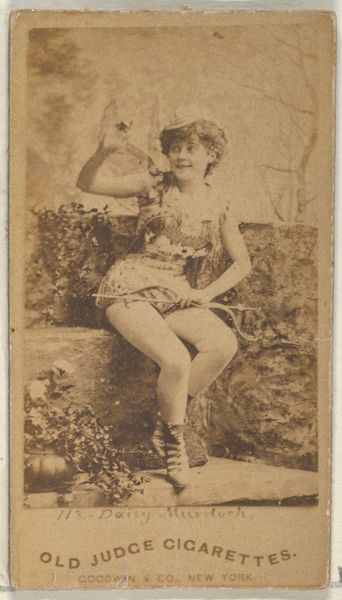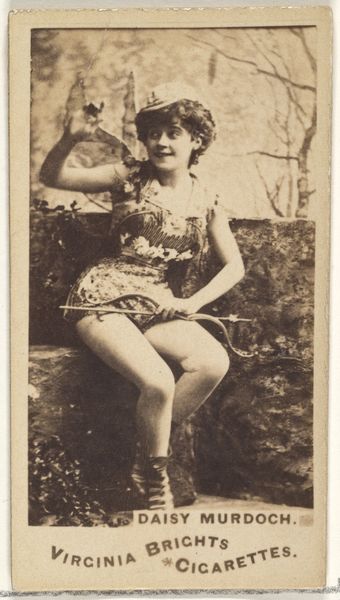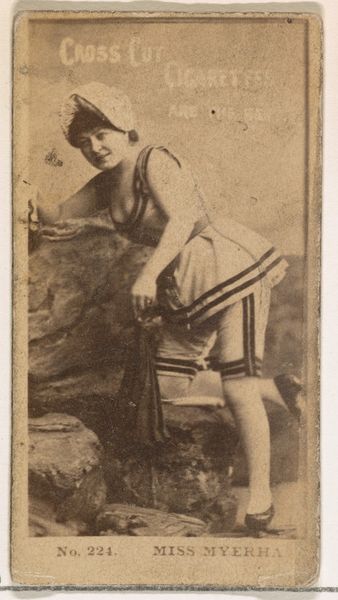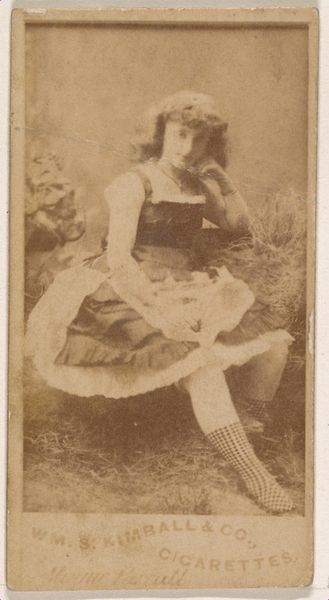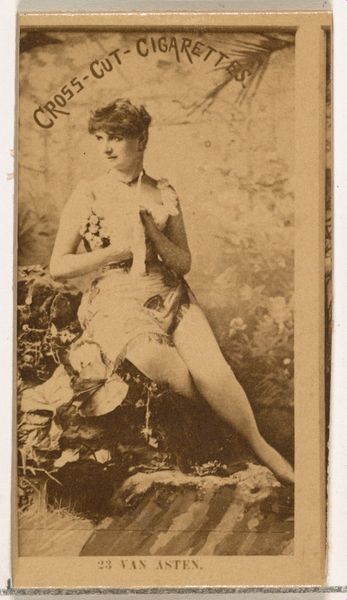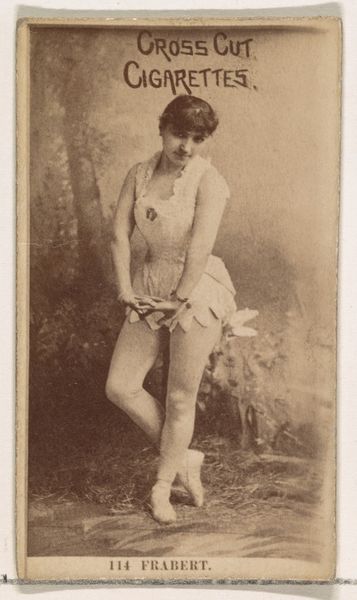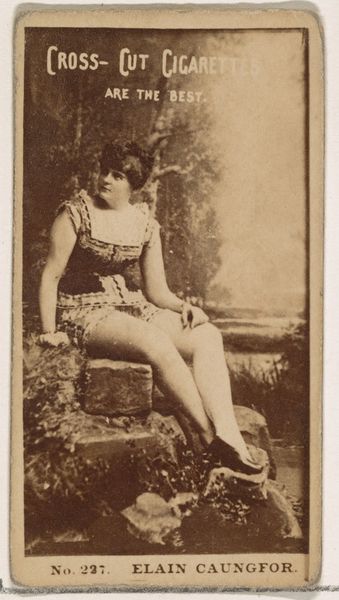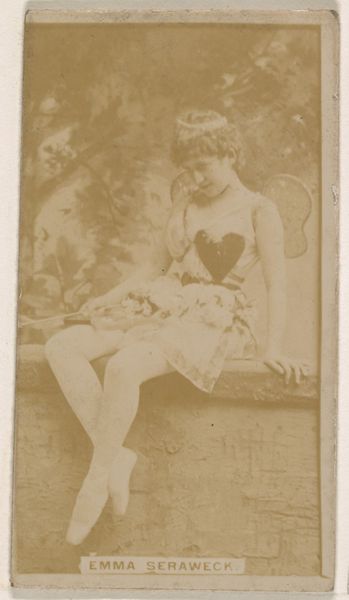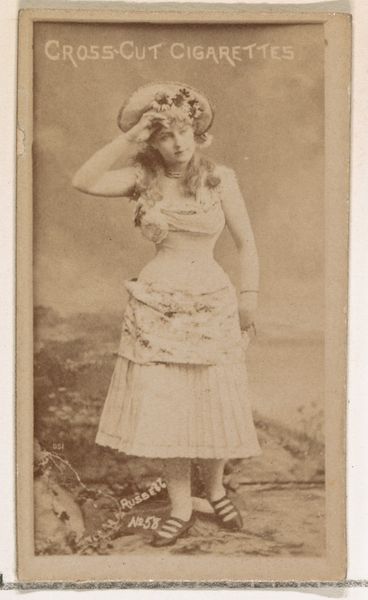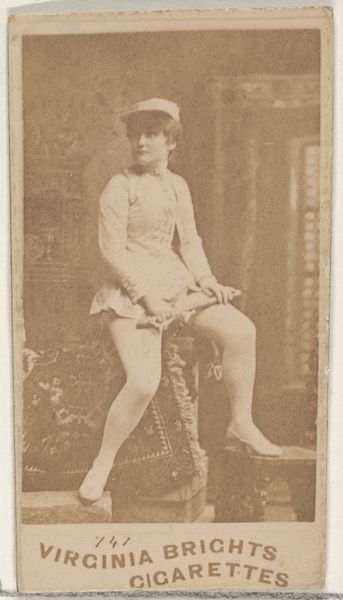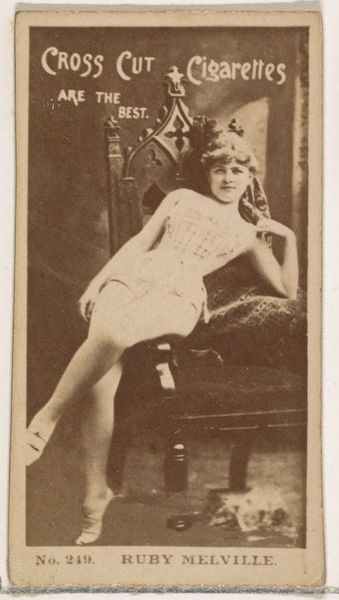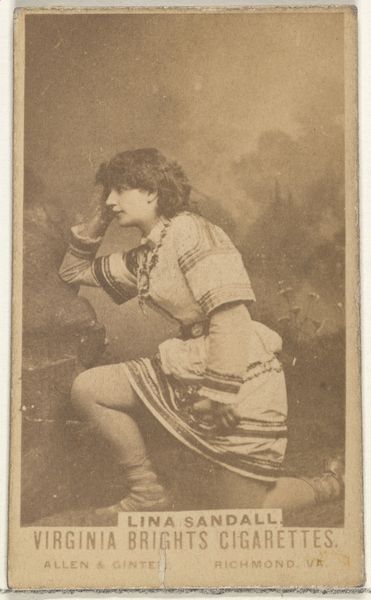
Card Number 256, Daisy Murdoch, from the Actors and Actresses series (N145-2) issued by Duke Sons & Co. to promote Cross Cut Cigarettes 1880s
0:00
0:00
drawing, print, photography, albumen-print
#
portrait
#
drawing
#
aged paper
#
toned paper
#
light pencil work
# print
#
photography
#
genre-painting
#
albumen-print
Dimensions: Sheet: 2 5/8 × 1 7/16 in. (6.6 × 3.7 cm)
Copyright: Public Domain
Curator: This is a trade card from the 1880s, specifically “Card Number 256, Daisy Murdoch, from the Actors and Actresses series (N145-2) issued by Duke Sons & Co. to promote Cross Cut Cigarettes.” The albumen print resides here at the Metropolitan Museum of Art. Editor: It's instantly striking—the sepia tone gives it such an antiquated feel, and the sitter, perched there, seems almost ethereal, as if she is about to vanish. The quality and state of the print itself makes her pose timeless. Curator: Absolutely. Think about the conditions in which this card was produced. Duke and Sons, a major tobacco manufacturer, mass-produced these images to stiffen their cigarette packs and entice customers. The labor involved – photographers, printers, the models themselves – and the sheer volume of these cards point to the booming industry of the time and a growing consumer culture. Editor: Exactly! And how these cards circulated. This isn't simply an innocent portrait; it’s a marketing tool tied to the then-ubiquitous vice of smoking. We can unpack so much regarding gender, representation, and capitalism here. Daisy Murdoch, presented as this object of desire, participates in the commodification of the female image. What agency did she have in all of this? Was she a willing participant in the creation and distribution of her image for mass consumption? Curator: An excellent point. Moreover, it demonstrates how photography moved beyond the studio into the realm of mass media and advertising, with techniques and processes that speak to the technology, expertise, and economies needed to run the tobacco empire. Editor: Let's not forget how this imagery contributed to the shaping of popular ideas around celebrity culture. Actresses like Murdoch became idealized figures through this kind of widespread circulation. Think about what kind of narrative this image perpetuates! Curator: Indeed. The value is multifaceted. This humble trade card provides a glimpse into labor practices, advertisement, consumer culture, image making and printing processes of a specific time. Editor: Exactly. Examining how beauty standards, and celebrity culture are marketed opens a critical dialog about commodification of images for consumers as much as for producers. It becomes a reflection of gender, race, class that transcends mere representation and touches upon exploitation. Curator: Considering its initial purpose, this small piece of cardstock triggers such complex narratives. Editor: Absolutely, I love when we realize art is never really about just the artwork itself, it's what comes with it.
Comments
No comments
Be the first to comment and join the conversation on the ultimate creative platform.
